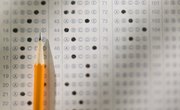A special education paraprofessional is someone who supports the classroom teacher. A paraprofessional typically works with one student individually or with small groups of students while the teacher instructs the class. Paraprofessionals should support the teacher in all areas of academic development to ensure children with special needs are successful.
A paraprofessional is often used to support a teacher in an inclusive classroom setting where children with disabilities receive services within the regular classroom environment. Paraprofessionals also work in smaller, self-contained classroom settings to support the teacher and students. A special education paraprofessional may be called a teaching assistant, an instructional assistant, teacher aide, program assistant, teacher assistant, classroom aide or instructional aide.
General Training Needs
Special education paraprofessionals have an important job. In an inclusive setting, it is vital that the classroom teacher has enough support to work with children with disabilities as well as children who are developing normally. Special education paraprofessionals must have knowledge and skills related to the general curriculum and know how to apply strategies and techniques to help students with and without disabilities learn effectively. Working with children with disabilities can be difficult as a result of specific learning needs and behavioral issues. Training in the areas of positive behavior support and curriculum modifications helps the entire classroom team work more effectively.
Targeted Training Needs
Special education paraprofessionals work with a number of children who have very different learning needs. This situation leads to the necessity for special education paraprofessionals to be trained in specialized techniques that encourage development in the areas of communication, classroom instruction, child development, classroom technology, implementation of individual child goals, strategies for working with children with special needs and any specific individual needs a child has related to a disability.
Training Options
Special education paraprofessional training can be provided in a number of ways. These include enrolling in college courses, completing online courses for credit or certification, learning from colleagues and administrators, and attending district in-service training opportunities Classroom teachers can also provide training to paraprofessionals directly related to a specific child’s disability.
Amount of Training
School districts often require a certain number of hours of in-service training for special education paraprofessionals per school year. It is not uncommon for districts to want special education paraprofessionals to have on-the-job experience in a classroom prior to employment in a special education classroom. Many job descriptions stipulate that after one to two years of employment, a special education paraprofessional must have completed a specific number of training hours for employment to continue.
Certification Needs
Certification is often necessary to become a special education paraprofessional. The ParaPro test is a nationally used certification test for this field. The ParaPro is a general aptitude test that measures a person’s knowledge and skills, and ability to use them in a professional setting. The ParaPro is required by the No Child Left Behind Act.
Related Articles
References
Writer Bio
Mary Johnson-Gerard began writing professionally in 1975 and expanded to writing online in 2003. She has been published on the Frenzyness Divorce Blog and on Neumind International Pte Ltd. Her book "When Divorce Hurts Too Long—Ouch" was published in 2009. Johnson-Gerard holds a doctorate in educational psychology from the University of Missouri.











